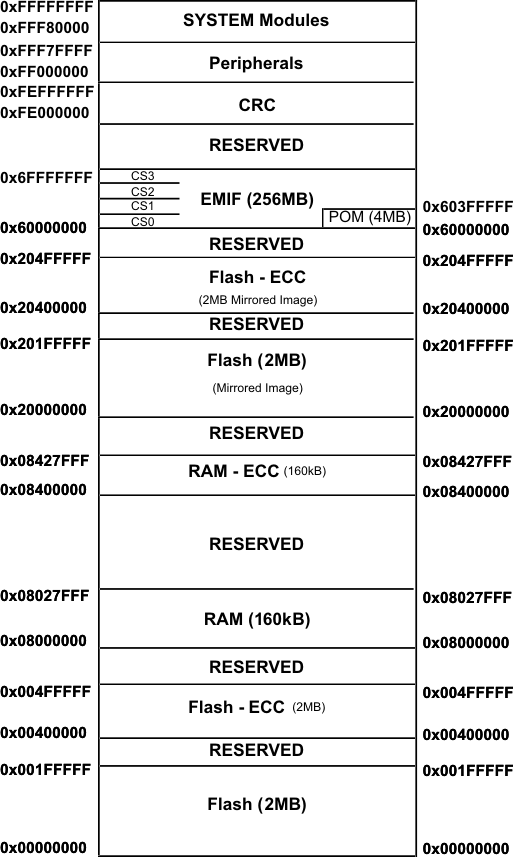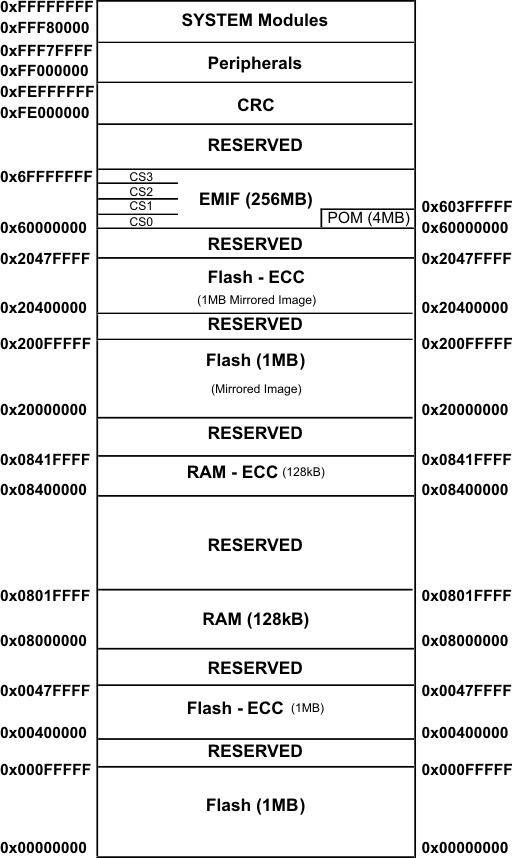SPNS141G August 2010 – October 2018 TMS570LS10106 , TMS570LS10116 , TMS570LS10206 , TMS570LS20206 , TMS570LS20216
PRODUCTION DATA.
- 1 TMS570LS Series 16/32-BIT RISC Flash Microcontroller
- 2 Device Overview
- 3 Reset / Abort Sources
-
4 Peripherals
- 4.1 Error Signaling Module (ESM)
- 4.2 Direct Memory Access (DMA)
- 4.3 High End Timer Transfer Unit (HET-TU)
- 4.4 Vectored Interrupt Manager (VIM)
- 4.5 MIBADC Event Trigger Sources
- 4.6 MIBSPI
- 4.7 ETM
- 4.8 Debug Scan Chains
- 4.9 CCM
- 4.10 LPM
- 4.11 Voltage Monitor
- 4.12 CRC
- 4.13 System Module Access
- 4.14 Debug ROM
- 4.15 CPU Self Test Controller: STC / LBIST
- 5 Device Registers
- 6 Device Electrical Specifications
-
8 Peripheral and Electrical Specifications
- 8.1 Clocks
- 8.2 ECLK Specification
- 8.3 RST And PORRST Timings
- 8.4 TEST Pin Timing
- 8.5 DAP - JTAG Scan Interface Timing
- 8.6 Output Timings
- 8.7 Input Timings
- 8.8 Flash Timings
- 8.9 SPI Master Mode Timing Parameters
- 8.10 SPI Slave Mode Timing Parameters
- 8.11 CAN Controller Mode Timings
- 8.12 SCI/LIN Mode Timings
- 8.13 FlexRay Controller Mode Timings
- 8.14 EMIF Timings
- 8.15 ETM Timings
- 8.16 RTP Timings
- 8.17 DMM Timings
- 8.18 MibADC
- 9 Revision History
- 10Mechanical Packaging and Orderable Information
Package Options
Refer to the PDF data sheet for device specific package drawings
Mechanical Data (Package|Pins)
- ZWT|337
Thermal pad, mechanical data (Package|Pins)
Orderable Information
2.3.1 Memory Map
The memory map, including all available Flash and RAM memory configurations for the device family, are shown below. Figure 2-1 applies to TMS570LS20216 and TMS570LS20206. Figure 2-2 applies to TMS570LS10216 and TMS570LS10206. Figure 2-3 applies to TMS570LS10106 and TMS570LS10116.
 Figure 2-1 Memory Map of TMS570LS20216 and TMS570LS20206
Figure 2-1 Memory Map of TMS570LS20216 and TMS570LS20206  Figure 2-2 Memory Map of TMS570LS10216 and TMS570LS10206
Figure 2-2 Memory Map of TMS570LS10216 and TMS570LS10206  Figure 2-3 Memory Map of TMS570LS10116 and TMS570LS10106
Figure 2-3 Memory Map of TMS570LS10116 and TMS570LS10106 The Parameter Overlay memory space maps to the lower 4MB of the EMIF CS0 memory space. ECC must be disabled by software via the CPU CP15 register if POM is used to overlay the program memory to the EMIF space; otherwise ECC errors will be generated. The contents of memory connected to the EMIF are not guaranteed after a power on reset. The addressable EMIF memory range is limited to the lower 32MB of each EMIF chip select for 16bit memories, and to the lower 16MB of each EMIF chip select for 8bit memories. The default EMIF data width is 16bit. The EMIF pins do not have GIO functionality.